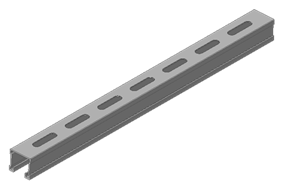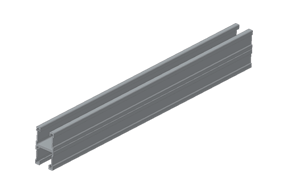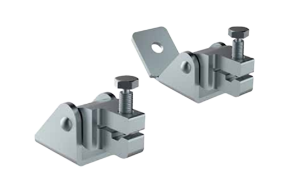The system adopts excellent alloy as enclosure material, enjoys non-magnetism, environment protection, light weight and fast heat dissipation capability. No-eddy current loss when system on loading. Airproof sealing parts for assembly keep the high IP capacity; Top and bottom aluminum extruded profile provide high strength and better locating. The surface is static painted and passed the 1200h salt withstand test, which can meet the high air humidity, salt separating, high pollution.
Support
Popular Products
-
Q What’s the Enclosure?
-
Q What is a the Busway?
Busway distribute electricity with greater ease and flexibility than some other more permanent forms of installation and distribution. Sometimes spelled bus bar or buss bar, they are often metallic strips of copper, brass, or aluminum that both ground and conduct electricity.
Different coating materials provide different conductivity limits and variations in the length of a product’s useful life. Busway can also come in a multitude of shapes and sizes which affect the ampacity of the product. The word ampacity refers to the maximum amount of electric current a conductor can carry before sustaining critical levels of deterioration.
Other reasons that busway are popular:Reduced facility costs
Because less construction labor means installation is less expensive and there are no costly changes and outside labor costs for electrical specialists.Faster installation
Because building projects are up and running faster plus the ability to add, remove or relocate power easily and quickly with no downtime.Flexibility for the future
Because some plug-in units can be disconnected and reconnected without de-energizing, require no routine maintenance and are faster and less costly for expansion or remodeling.Environmentally friendly
Because busway often require fewer installation materials and plug-in outlets are reusable and re-locatable.Recent advancements to the structural integrity of busway systems have proven changing the shape of the copper busway greatly improves the efficiency, exposing more of the copper surface area and increasing a balanced electrical flow while decreasing its ampacity.
-
Q What support methods are available?
Trapeze Support (Single or Multi-tier)
Hanger rod clamps, “J” hangers
Center Hung Support
Wall Support
Underfloor Support
Pipe stanchions or other structures
Each of these support methods are preferable in different applications. For instance, trapeze supports may be desired in an application where cables will be pulled through the cable tray. Center hung supports, on the other hand, are generally used when cables will be installed from the side of the cable tray. Center hung supports are
especially useful when future cable additions are desired. Wall supports and underfloor supports are useful when ceiling structure is not available or undesired. Outdoor installations are controlled by the structures available to support the cable tray. -
Q What types of Cable Tray are available?
Solid Cable Tray
Perforated Cable Tray
Ladder Cable Tray -
Q Now that I know what types of cable trays are available, what configurations are available?
Straight sections are available to route cables in a horizontal or vertical plane. Fittings are available to route cables in various directions in either the horizontal or vertical planes. Typical examples of fittings include bends, tees, crosses,reducers, and risers. Each of these fittings are available in various radii and bend angles. Covers are accessories and shouldn’t be in here unless splices etc. are included.
-
Q What materials / finishes are available for the various cable tray systems?
Steel (Min. Yield = 33KSI)
Plain: hot rolled pickled and oiled steel per ASTM A569 (Commercial Quality) or A570 (Structural Quality)
Pre-Galvanized: mill galvanized steel per ASTM A653 CS (Commercial) or SS (Structural) G90
Hot Dip Galvanized After Fabrication: plain steel which is hot dipped after fabrication per ASTM A123.Stainless Steel: (Min. Yield = 35KSI)
type201 or 304 or 316L fully annealed stainless steelAluminum: (Min.Yield = 23 KSI)
6063-T6 or 5052-H32 alloy per ASTM B209




 Strut Channel
Strut Channel Back to Back Strut Channel
Back to Back Strut Channel Connecting Base Fitting
Connecting Base Fitting


